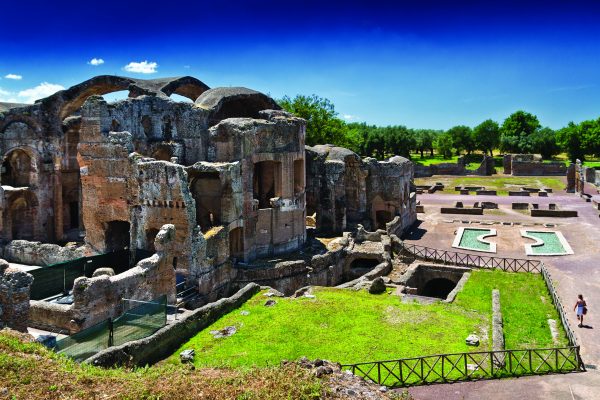How does a Roman Emperor create the ultimate symbol of power? By building an ‘ideal city’ that still stands to this day.

Unenthused by existing villas yet keen to follow in the tradition of Roman emperors’ having a rural retreat, Emperor Hadrian constructed his vast residential complex at the foot of the Tiburtine Hills in Tivoli. You can be forgiven for being misled by the term ‘villa’, which conjures up an image of a substantial house with a swimming pool. Villa Adriana takes it to another level, with a complex reminiscent of an ancient Roman city, covering over 300 acres in its heyday during the 2nd century AD. For comparison, this is an expanse larger than the city of Pompeii!
Under the UNESCO umbrella since 1999, Villa Adriana is a combination of architectural traditions from Rome, Greece and Egypt, echoing the buildings and places Hadrian saw on his extensive travels around his empire. Designed to be self-sufficient, this ‘ideal city’ provided all that Hadrian, his large court and visiting bureaucrats, needed: palaces, thermal baths, Greek and Latin libraries, galleries, reflective pools, fountains, and dwellings for servants to serve them.
Just as the Romans did, you can still promenade along the Canopus, a canal-like pool built in homage to the River Nile and its Egyptian city namesake, and step into the Teatro Marittimo, Hadrian’s private residence ensconced on a private island.
Despite the passing of over 1,700 years, the remains of 30 buildings and structures still exist and retain the magnificence of Emperor Hadrian’s reign.
Liked this article? Discover more like it in our archive.
